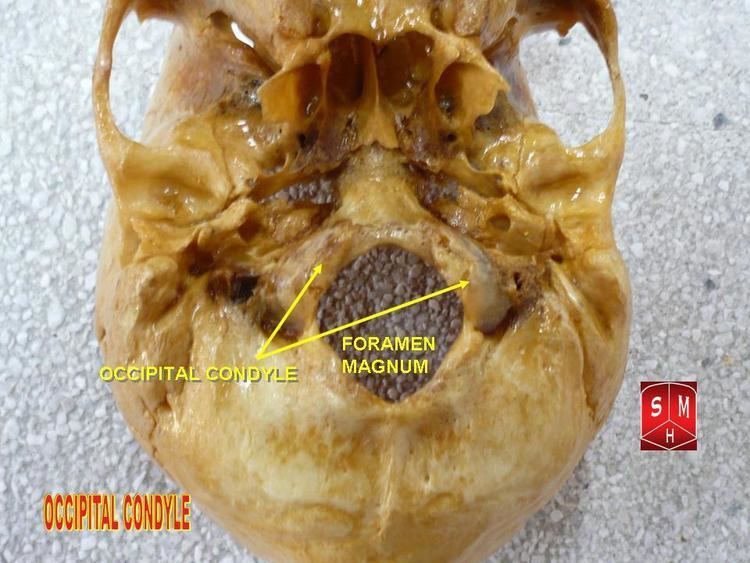Latin Condylus occipitalis TA A02.1.04.014 | Dorlands/Elsevier 12254729 FMA 52861 | |
 | ||
The occipital condyles are undersurface protuberances of the occipital bone in vertebrates, which function in articulation with the superior facets of the atlas vertebra.
The condyles are oval or reniform (kidney-shaped) in shape, and their anterior extremities, directed forward and medialward, are closer together than their posterior, and encroach on the basilar portion of the bone; the posterior extremities extend back to the level of the middle of the foramen magnum.
The articular surfaces of the condyles are convex from before backward and from side to side, and look downward and lateralward.
To their margins are attached the capsules of the atlanto-occipital joints, and on the medial side of each is a rough impression or tubercle for the alar ligament.
At the base of either condyle the bone is tunnelled by a short canal, the hypoglossal canal.
In dinosaurs
The occipital condyle is a rounded projection that is present on the posterior (bottom) of the dinosaur's skull. It articulates with the first cervical (neck) vertebra and, in effect, attaches the head of the dinosaur to its body. Functionally it allows the head to move from side to side, up and down, as well as to rotate. A combination of a number of smaller bones (such as the basioccipital and exoccipitals) participate in the formation of this structure. The presence of a single occipital condyle in dinosaurs, crocodilians and birds is contrasted with the condition in synapsids, amphibians, and mammals including Homo sapiens, where two occipital condyles are present. In most dinosaurs the occipital condyle is situated at the rear part of the skull, below the foramen magnum, and points toward the posterior of the animal. Some exceptions to this exist, such as in the iguanodontian Anabisetia saldiviai where the condyle points downward. In some dinosaurs, where the skull was not preserved, the presence of a small occipital condyle suggests to some paleontologists that the skull of the dinosaur was relatively small.
